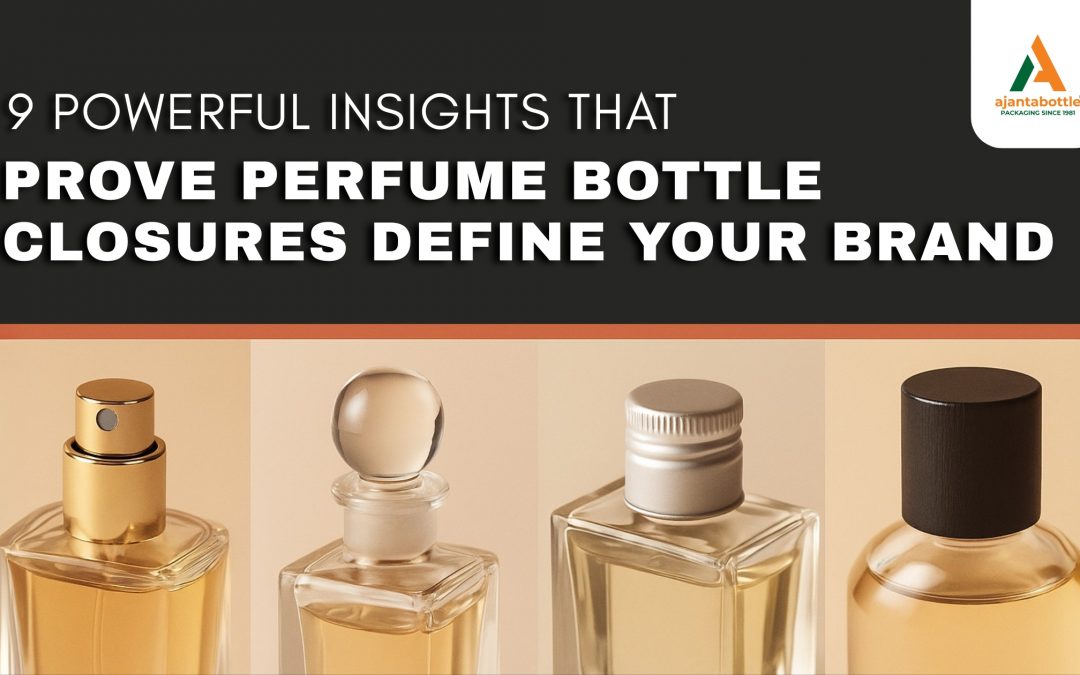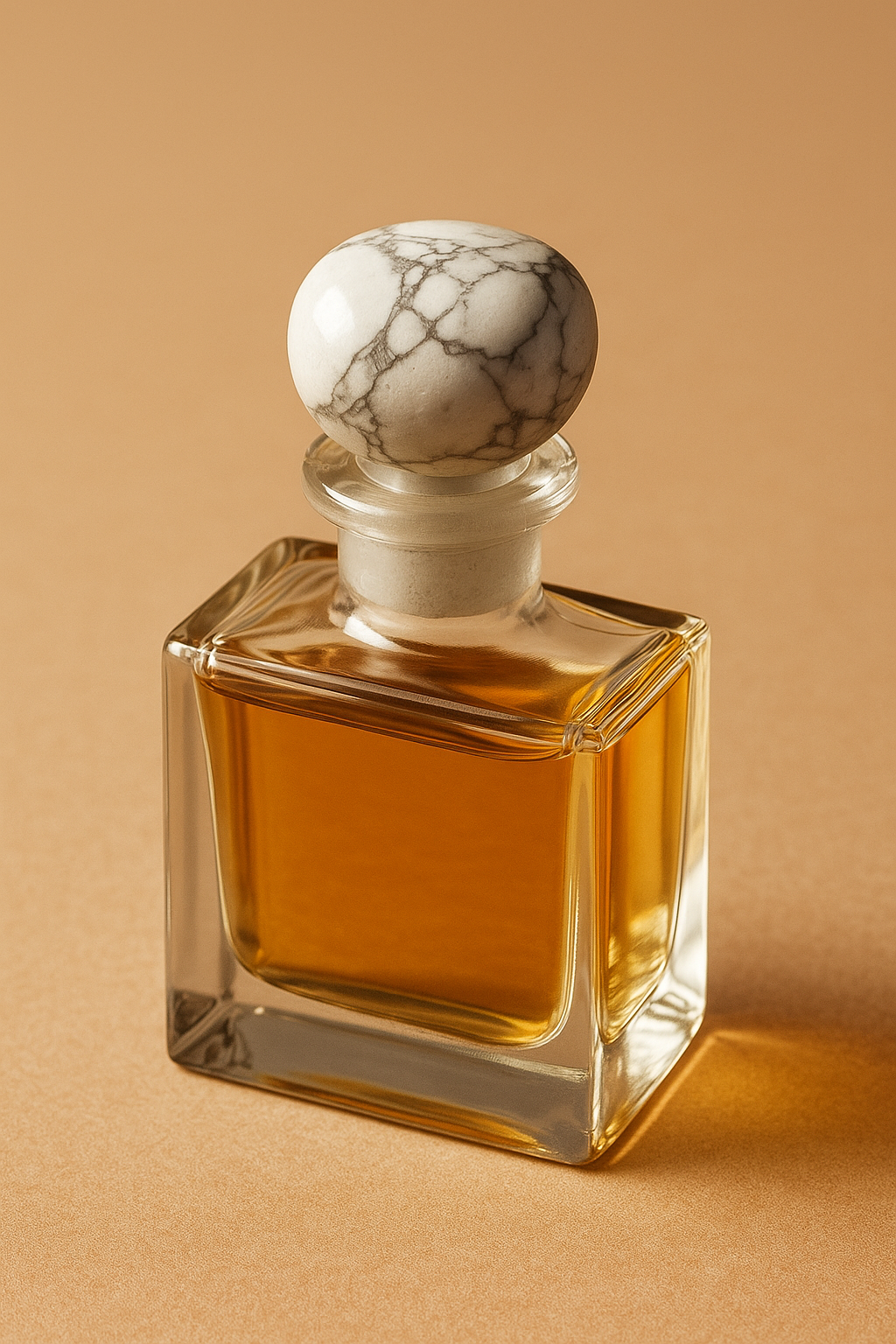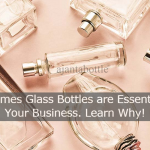Imagine this: you pick up a perfume bottle from a boutique shelf or pull it out of a gift box. Before the scent even reaches your nose, your fingertips are already forming an opinion. Is it sleek? Is it secure? Does it feel refined or rushed? That moment of contact, when you press, twist, or lift the closure, is when your brand makes its first impression.
In 2025, closures are no longer technical afterthoughts. They are intentional, interactive, and integral to the story you’re telling. The global fragrance market is set to reach $64.7 billion this year, and in such a crowded space, the smallest details matter immensely. Think of Le Labo’s signature magnetic click that evokes luxury in a single gesture or a handcrafted glass stopper that whispers heritage and artistry.
A great closure does more than seal a bottle. It safeguards the scent, defines the aesthetic, and becomes a part of the daily ritual. A poor closure, on the other hand, erodes trust, diminishes shelf presence, and often leads to expensive returns or frustrated reviews.
The message is clear: your closure is not just a cap. It’s your customer’s first tactile encounter with your perfume. Make it memorable, make it meaningful, and make it matter.
Why Perfume Bottle Closures Matter More Than Ever
A recent Euromonitor survey found that 58% of consumers are swayed not just by how a perfume smells, but by how the bottle feels in their hand. The closure, that simple act of twisting, pressing, or lifting, sets the stage long before the first spritz.
In today’s market, closures are more than a mechanical afterthought. They are storytellers, protectors, and facilitators all at once:
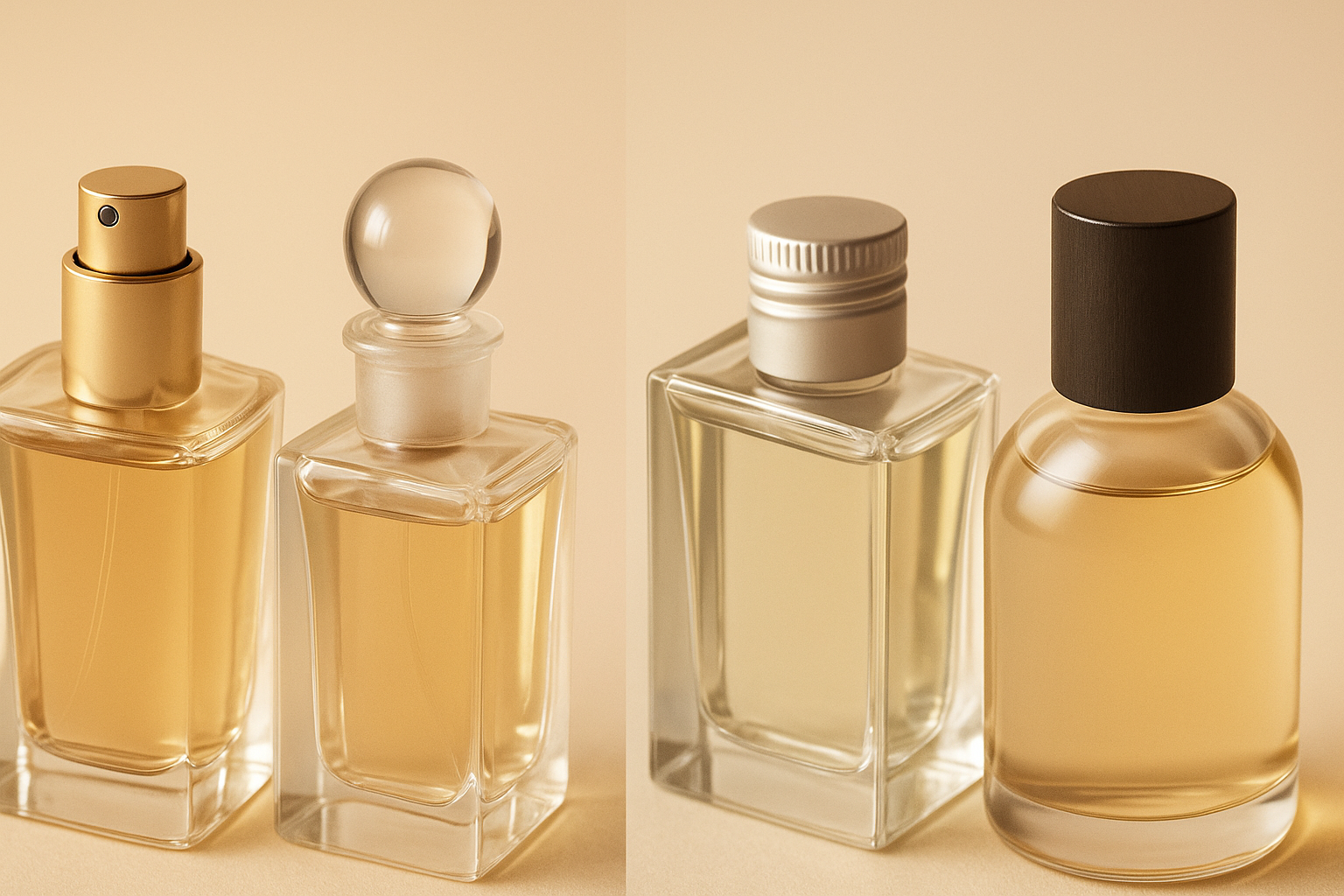
| Role | Impact on Brand |
|---|---|
| Brand Communicator | The material, texture, and finish all contribute to how your brand is perceived |
| Fragrance Guardian | A tight seal helps preserve scent quality and prevents premature evaporation |
| Usage Facilitator | The right closure makes the product easier to use, store, and carry |
Take this into account: In 2023, a report by Research and Markets revealed that nearly one in three perfume returns online were due to packaging complaints. Within those, 22% pointed directly at closure problems from leaking pumps to misaligned caps.
These aren’t small oversights. They are the kind of mistakes that chip away at consumer trust and cost your business more than just money. They affect how your fragrance is remembered or forgotten.
Types of Perfume Bottle Closures
Let’s explore the three most common types of closures in the perfume industry and how each serves a distinct purpose based on user expectations and branding strategy.
Spray Pumps: These are the go-to choice for most modern perfume brands. Spray pumps offer ease of use, a controlled mist, and a sleek, contemporary look. They are ideal for everyday fragrances that require clean application and practicality. Their wide compatibility with bottle formats and the ability to customize the actuator, collar, or spray angle makes them a favorite across luxury and mass-market segments. In 2024, they continue to dominate, accounting for over 70% of the global market.
Stopper Closures: Often found in niche perfume lines, high-viscosity attars, and limited-edition collections, stoppers bring a sense of heritage and ceremony. They’re typically made from glass, resin, or composite materials, and evoke a slower, more ritualistic user experience. Brands choose stoppers when they want to emphasize craftsmanship and exclusivity. Though they require careful production and handling, their tactile and visual appeal can elevate a fragrance to an art object.
Screw Caps: Simple and effective, screw caps are widely used for miniature bottles, travel sizes, and promotional vials. They are easy to produce, cost-efficient, and ideal for brands focused on practicality. While not considered luxurious, their straightforward design ensures functionality and safety during transport. Decorative overcaps or tamper-evident features are often added to make them more visually appealing.
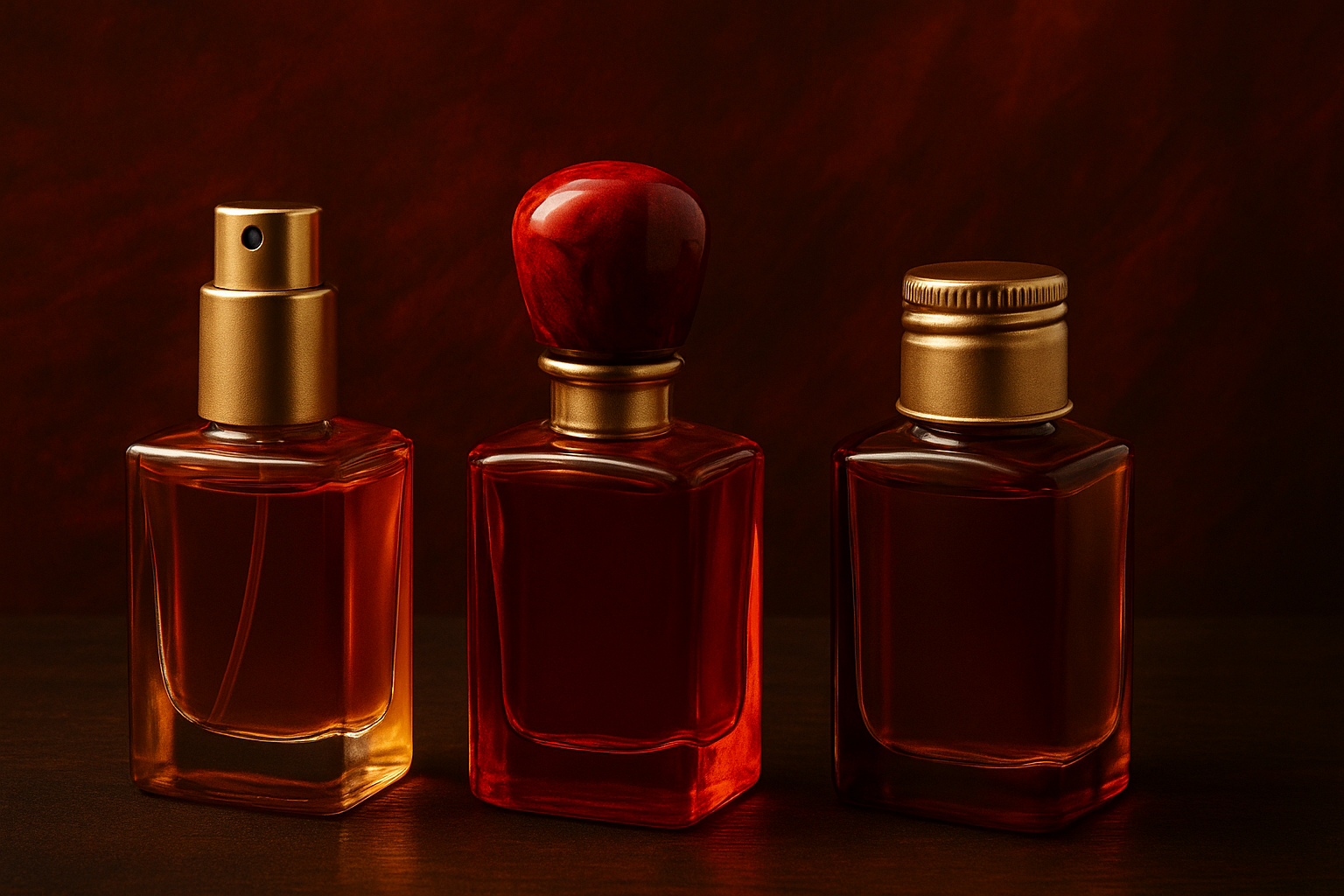
Each closure type serves a different role depending on the product’s purpose, the brand’s positioning, and the desired user experience.
Spray Pumps: Mist with Modern Elegance
Spray pumps deliver fragrance in a fine mist, ensuring hygienic and controlled application. They’re either crimped or screwed onto the bottle’s neck and are precision-engineered to balance performance and aesthetics.
What’s Inside
- Pump chamber with compression spring
- Custom-length dip tube
- Actuator button
- Crimp or screw-on collar
- Decorative or protective cap
2024 Innovations
Luxury brands like LVMH and Estée Lauder are investing in feather-mist actuators that release fragrance with micron-level consistency. Zara’s new unisex line includes angled actuator heads that adapt to finger pressure. Indie brands are exploring biodegradable PLA-based actuators.
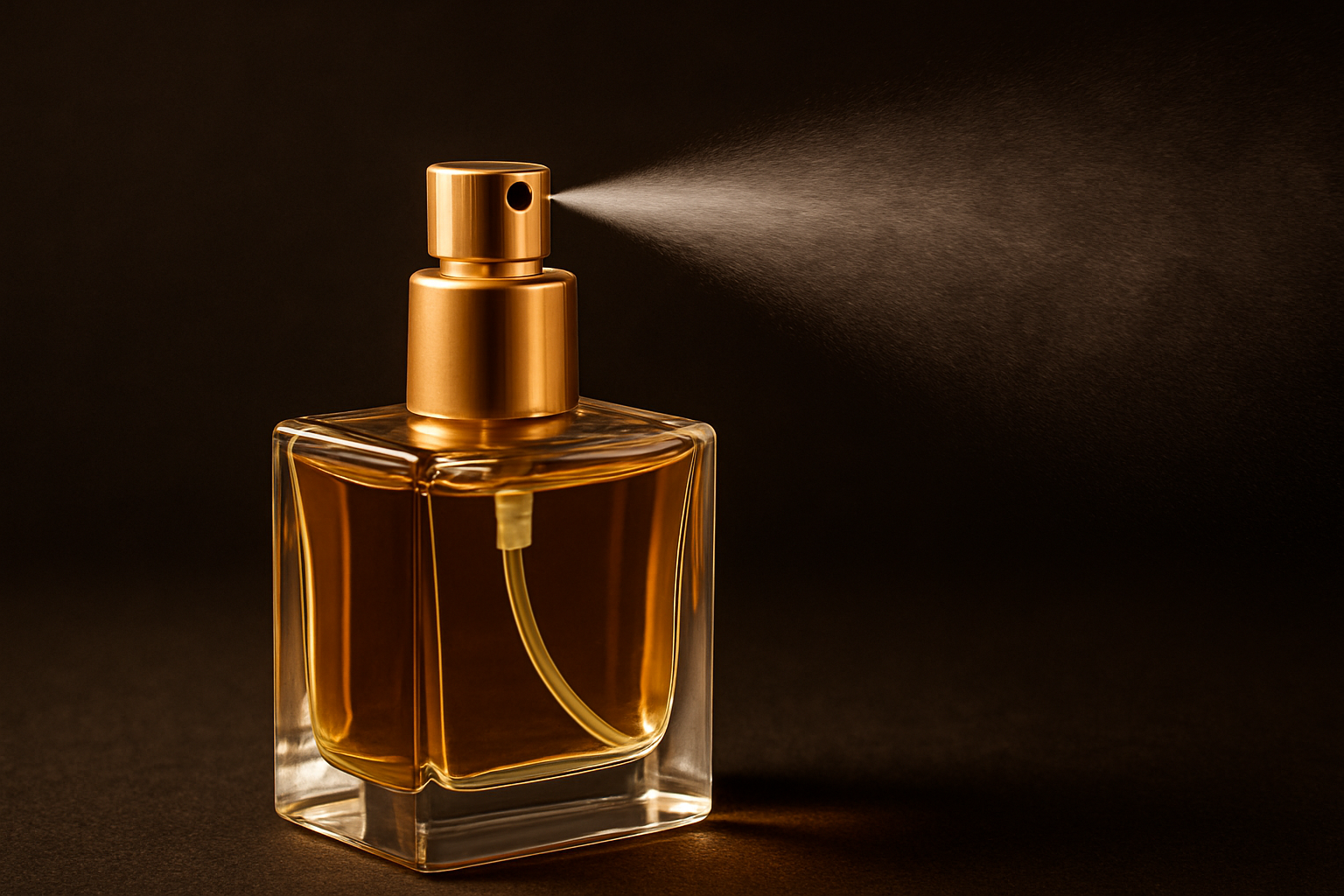
Best Practices
- Match bottle finishes to FEA15 or FEA18 standards
- Test spray consistency in various climate zones
- Check for material compatibility with essential oils and alcohol
- Ensure the actuator lifespan exceeds 5,000 sprays
A great spray pump should perform flawlessly while enhancing the overall sensory experience.
Stopper Closures: Where Craft Meets Ceremony
Stoppers seal the perfume bottle through friction or a press-fit and are typically made from glass, resin, or a combination of both. They carry a strong sense of tradition, often associated with high-end perfumery.
Popular Types
- Ground glass stoppers: Offer a precise conical fit and high visual appeal
- Glass with polymer insert: Provides a tight seal while allowing reusability
- Sculpted resin stoppers: Ideal for artistic collections or themed launches
Challenges and Considerations
- Resin can warp in high temperatures
- Ground glass requires diamond-grit polishing for optimal fit
- Fragile materials need padded or velvet packaging to avoid breakage
2024 Highlight
Yes, a notable real-world example from 2024 is the luxury fragrance brand House of Bō. They have embraced the use of stopper closures in their perfume packaging, aligning with their commitment to artisanal craftsmanship and sustainable practices. Each perfume bottle is adorned with a hand-sculpted stone stopper, crafted by Mexican artisans, making every piece unique. For instance, their fragrance “Casa Blanca” features a howlite stone stopper, while “Oro Verde” is topped with green jasper. These stoppers not only provide a tactile and visual appeal but also reflect the brand’s dedication to storytelling and cultural authenticity in their packaging.
Screw Closures: Minimalist, Scalable, and Effective
Threaded screw caps are designed for practicality. They’re ideal for sample vials, roll-on perfumes, and solid perfume jars.
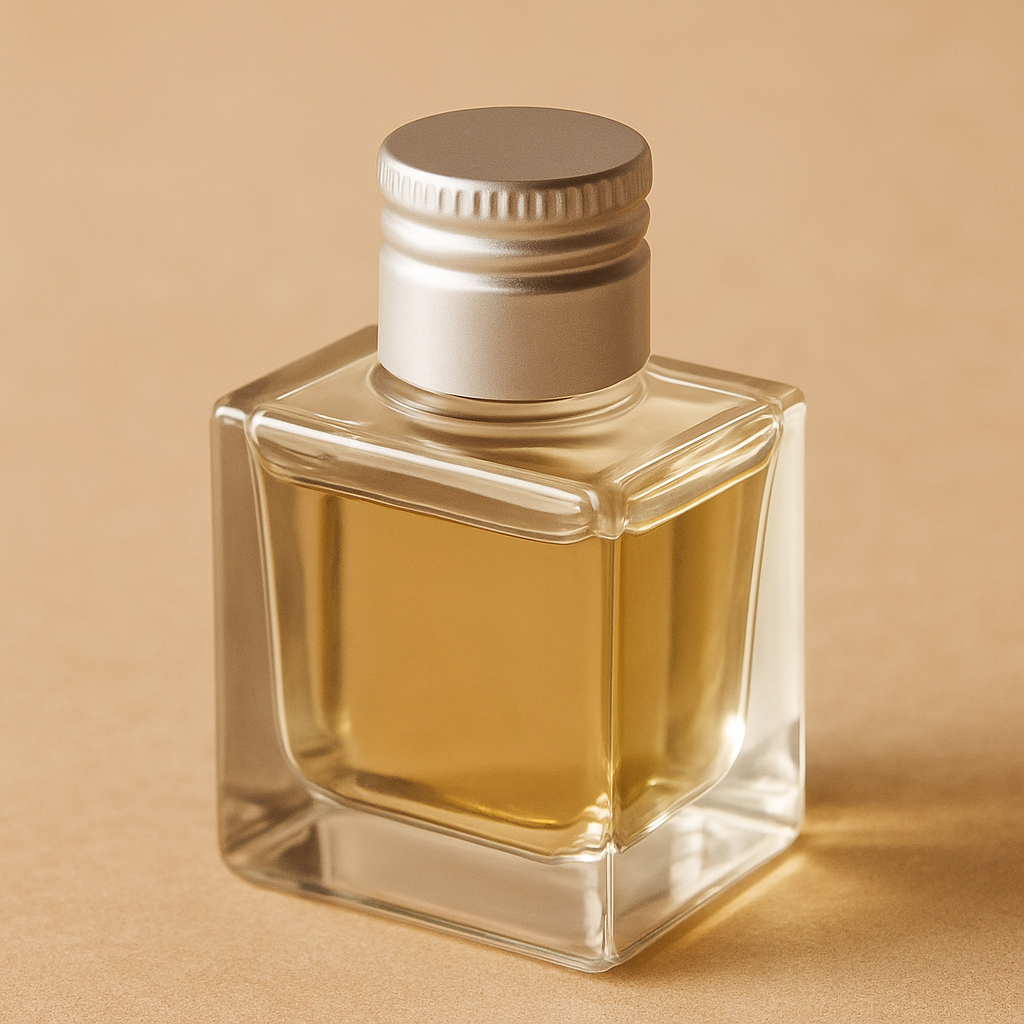
Key Advantages
- Cost-effective production
- Compatible with tamper-evident liners
- Suitable for recyclable materials like PP and aluminum
Common Pairings
- Roll-ons: Use screw caps with ball inserts
- Solid perfumes: Fit metal screw lids with liners
- Samples: Opt for tight-sealing mini screw caps
Screw caps are reliable and scalable, making them a top choice for mass production and distribution.
Compliance, Compatibility, and Climate Readiness
Key Regulatory Standards
Understanding compliance goes far beyond ticking checkboxes. It’s about protecting your fragrance, your customer, and your brand reputation in every market you plan to enter. Here’s a closer look at the most important international guidelines every perfume supplier and brand owner should understand.
UN1266 – Flammable Liquid Classification Perfumes that contain alcohol are considered flammable and fall under the United Nations’ hazardous goods classification, UN1266. This means closures must be proven leak-proof under conditions that simulate air cargo environments, including changes in pressure and impact during handling. If your closure fails these tests, your perfume might not even be allowed to board a plane. For direct-to-consumer international shipping, this is a serious limitation that could halt growth before it starts.
REACH & RoHS – European Union Safety Standards REACH ensures that every material used in your perfume bottle closure, from plastics to coatings, is free from harmful chemicals such as phthalates, lead, and formaldehyde. RoHS complements this by governing electronic components — for example, closures with embedded NFC or RFID chips – ensuring they are safe and non-toxic. If you’re targeting European shelves, both REACH and RoHS compliance are non-negotiable. Certificates of Conformity are expected and often requested at customs.
IS 14648 – Indian Standards for Pressurized Containers If your product uses a spray mechanism, especially a pressurized one like in deodorant-style formats, IS 14648 outlines what’s needed to pass India’s safety standards. This includes how well your closure handles burst pressure, valve strength, and repeated use during transit and customer handling. Skipping this step risks failing compliance audits or facing costly post-launch changes.
Climate Compatibility: Perfume Bottle that Survives the Journey
Your perfume bottle closure needs to withstand not just time but temperature, humidity, and travel. Packaging that performs perfectly in Paris might fall apart in Mumbai or freeze in Moscow. Here’s what to account for:
Hot and Humid Climates (India, UAE, Southeast Asia) High heat can cause adhesives to melt, caps to expand, or plastic components to warp. PVC becomes especially problematic in these conditions, often turning sticky or misaligned. Metal trim glued to caps may begin to peel, and even the internal gasket could lose its shape, leading to leaks or broken seals.
Cold and Dry Climates (Russia, Northern Europe, North America) On the other hand, freezing temperatures can cause plastics to contract, crack, or lose flexibility. Spray pumps may misfire if the perfume thickens or if internal springs and seals stiffen in the cold. Even a minor misfit can result in air leaks that compromise your fragrance integrity.
Testing Protocols for Global Readiness of a Perfume Bottle
Rigorous testing ensures your closure doesn’t just work on paper but performs under real-life shipping and storage conditions. Here are the tests that matter most:
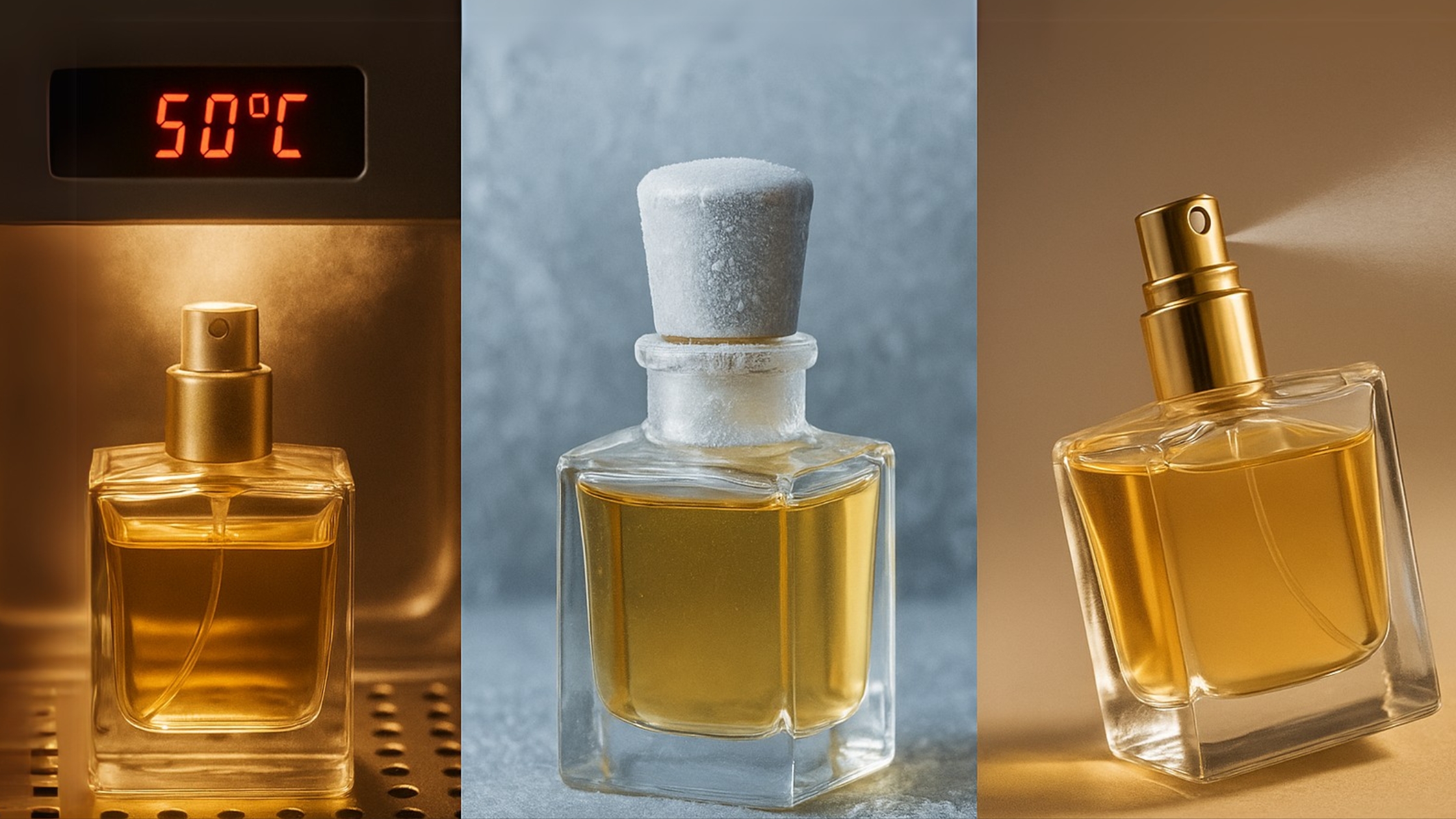
- High-Temperature Chamber Test Place the bottle and closure in a controlled chamber at 45–50°C for three days. This simulates warehouse and transport exposure in tropical regions. Check for glue melting, material warping, and loss of cap integrity.
- Low-Temperature Stress Test Store your product at -15°C for 48 to 72 hours. Then inspect the closure for cracks, loosened caps, and performance of the spray mechanism. These conditions replicate what might happen in unheated storage or air cargo holds.
- Tilt, Drop, and Cabin Pressure Simulation These tests replicate the forces your product might face in an aircraft or courier system. Tilt tests check for leaks when the bottle is on its side. Drop tests from 1 meter measure impact durability. Altitude simulations evaluate how closures handle pressure differences, especially important for spray pumps.
These tests don’t just reduce the risk of returns. They prove to your buyers and distributors that you’ve done the work. They help your perfume travel confidently, keeping its promise from your lab to your customer’s vanity.
Sustainability and Inclusive Design Trends for Perfume Bottles
What’s Changing, and Why It Matters
Walk through any fragrance aisle today and you’ll notice something different. Perfume bottle/packaging is becoming purposeful. From sustainable innovations to designs that speak to everyone, not just specific gender norms, the industry is evolving fast. Let’s unpack how closures are leading this transformation.
Greener Closures That Don’t Just Look Good, They Do Good
Monomaterial pumps are leading the shift. Made entirely from a single recyclable material like polypropylene, they make recycling easier. No more disassembling layers of plastic and metal. With these closures, your customer can toss the whole unit into the recycling bin knowing it’s designed for circular use. These pumps are already being embraced by sustainability-forward brands like Givaudan and Symrise.
Magnetic reusable caps are changing how luxury interacts with longevity. Instead of throwing away an entire bottle, customers keep the cap and just replace the fragrance refill. The result is reduced waste, a more meaningful connection to the product, and an elevated experience. Brands like Diptyque and Byredo have introduced these with great success, offering both elegance and eco-consciousness in one elegant twist.
PCR plastics, or post-consumer recycled plastics, are becoming standard. What was once considered industrial waste is now being reimagined as high-performance, visually appealing closures. Some leading manufacturers are committing to using up to 50 percent PCR material in their packaging. This shift significantly reduces the use of virgin plastic and lowers the overall carbon footprint of the product.
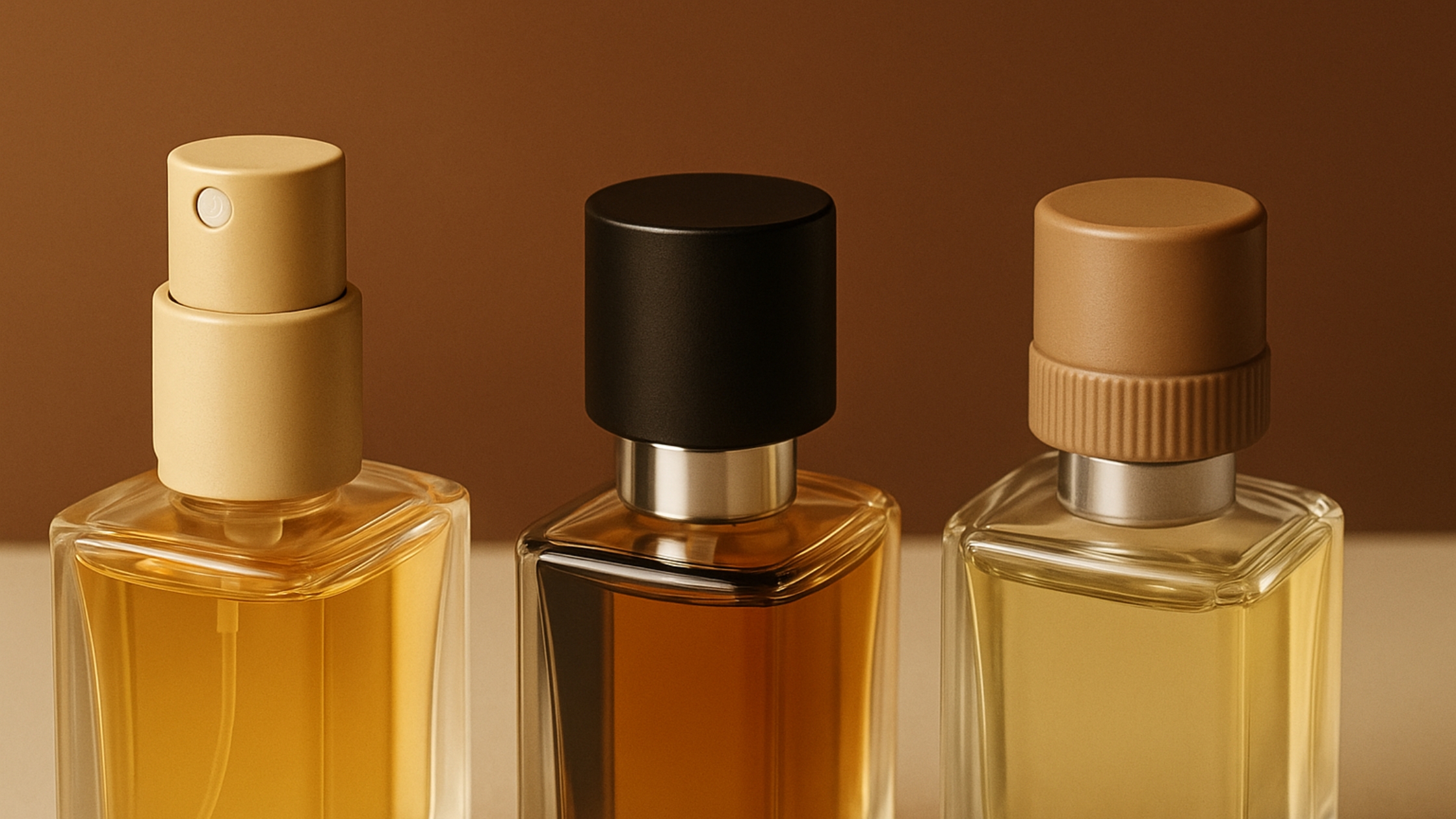
Designing for Every Identity, Not Just a Demographic
Perfume bottle has always been about self-expression. So why should packaging box people into narrow categories?
Modern closures are stepping away from gender stereotypes. Instead of relying on traditional pinks or heavy blacks, many brands are using natural, neutral shades like olive, sandstone, or ash. These tones don’t scream gender. They whisper elegance and inclusivity.
It’s not just color that’s changing. The shape of closures is telling a new story too. Instead of rigid symmetry and traditional silhouettes, we’re seeing flowing forms, gentle curves, and organic textures inspired by nature or handcrafted art. These shapes appeal to consumers looking for something personal, something that feels like it was made with them in mind.
Material innovation is also playing a big part. Think closures made from cork blends, compressed bamboo, or biopolymer resins that feel warm to the touch and tell a story about the Earth. These aren’t just sustainable, they’re emotionally engaging.
Who’s Leading the Way?
Several trailblazing brands have made headlines in 2024 and 2025 for reimagining perfume closures through the lens of both sustainability and inclusivity. One standout is Glossier’s rebrand of their fragrance line “You,” which now features fully recyclable, refillable bottles with low-profile magnetic caps made from post-consumer resin. The redesign blends their minimalist aesthetic with clear environmental responsibility, setting a new standard for the millennial and Gen Z market.
Another strong example is Escentric Molecules, which in 2024 introduced a capsule collection that features monomaterial perfume bottle caps in muted, non-gendered tones and asymmetric sculptural forms. These closures are crafted from a blend of bio-based polyamides and recycled fibers, making each piece slightly unique.
Perfume Bottle Closure Selection Decision Tree
Choosing the right closure for your perfume bottle can feel overwhelming. But once you define your brand’s position and audience, the options become clear. Here’s a human-friendly decision flow, now transformed into a visual guide to help you navigate.
Start With Your Brand Identity
What type of brand are you building?
➡️ Luxury / Niche Perfume Brand
Go for a Stopper Closure. These exude craftsmanship, luxury, and ritual. Perfect for high-end attars, limited-edition launches, or artistic fragrances. Think: Diptyque, Memo Paris, Trudon.
➡️ Trend-Focused / Gen Z-Oriented Brand
Opt for a Spray Pump. Sleek and intuitive, these work for everyday, fashion-forward perfumes. Great for easy access and shelf-ready aesthetics. Think: Zara Emotions by Jo Malone, Glossier You.
➡️ Sample Kit / Travel Product Brand
Choose Screw Caps. They are compact, practical, and cost-effective – ideal for miniatures, samplers, or on-the-go scents. Think: Commodity Discovery Sets, Roll-on Indie Fragrances.
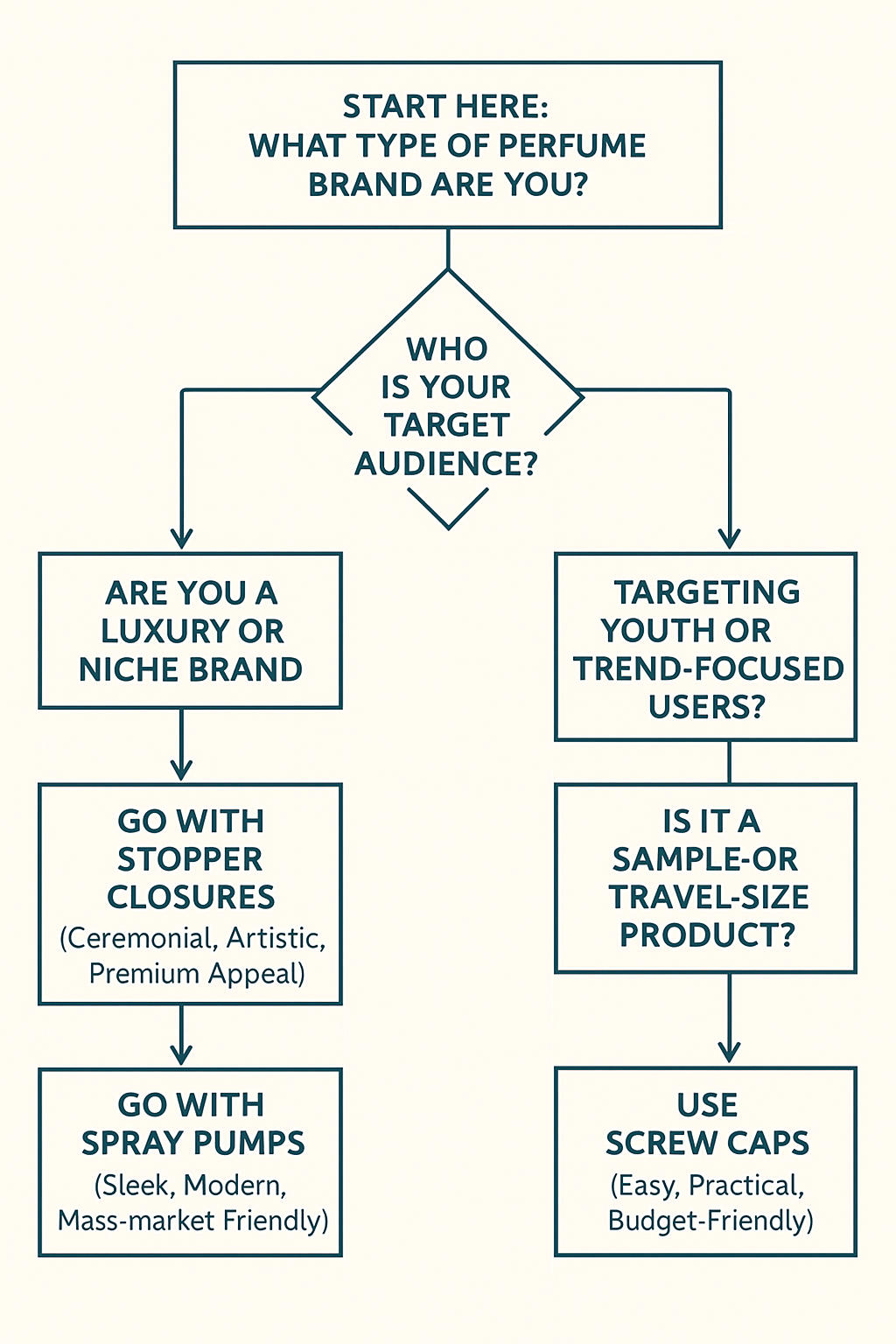
Final Checklist
Before you lock in your closure design and hit the production line, take a pause and walk through this checklist. Think of it as a conversation between your product and your customer.
- Will your closure get along with your fragrance?
Some perfume formulas, especially those rich in essential oils or high-proof alcohol, can clash with plastic components. Over time, they might cause warping, discoloration, or unwanted scent shifts. Make sure to test for chemical compatibility early, your perfume bottle closure should protect the fragrance, not alter it. - Can it handle the journey ahead?
Your perfume bottle may travel through blazing warehouse heat, chilly airplane cargo holds, and humid shopfronts. Will your closure stay intact through it all? Simulate those conditions in a climate chamber to find out before the real-world journey begins. - Does it look and feel like your brand?
Your closure is part of the first impression. Is it heavy or light? Matte or glossy? Easy to grip or more decorative? Every physical detail communicates something. Make sure it speaks your brand’s language whether that’s earthy and grounded, sleek and modern, or rare and refined. - Is it ready for the global stage?
Planning to ship internationally? Then your perfume bottle closure needs to meet standards like UN1266 for flammable goods or REACH and RoHS for safety compliance in the EU. Don’t wait until customs holds up your shipment, ensure you have test reports and certifications on hand. - Have you let real people try it?
Even the most beautifully engineered perfume bottle closure can fail if it doesn’t work for actual users. Hand it to a test group. Watch them open it. Close it. Spray it. Carry it around. You’ll catch things in five minutes that no machine test will ever reveal.
This isn’t just about crossing off tasks. It’s about honoring the journey from your design table to someone’s dresser. A well-chosen closure doesn’t just complete the perfume, it completes the experience.
Seal It Right with Ajanta Bottle
At Ajanta Bottle, we understand that a closure is far more than a functional component. It’s the final flourish and the tactile promise of what’s to come. With over 40 years of experience in premium packaging, we collaborate with fragrance creators to deliver perfume bottle closures that are not only technically sound but also emotionally resonant. From sleek, minimal pumps for modern brands to hand-crafted stoppers that narrate heritage, our solutions are made with care, precision, and compliance at their core.
If you’re working on a signature scent or launching a new fragrance line, we’re ready to help you design a closure that reflects your identity and stands out on any shelf.
Ready to create the perfect perfume bottle closure for your brand?
Connect with us:
● Email at sales@ajantabottle.com
● Phone/Whatsapp: +91 9891098918
You can also shop from more than 500+ packaging solutions on www.ajantabottle.com – India’s first ever comprehensive packaging e-commerce portal.
For additional information, browse through our blog at https://www.ajantabottle.com/blog/ or subscribe to our latest updates through our social media channels,
*YouTube channel: https://www.youtube.com/c/Ajantabottle
*LinkedIn Page: https://www.linkedin.com/company/ajantabottle
*Facebook Page: https://www.facebook.com/glassbottleindia
*Instagram Page: https://www.instagram.com/ajantabottle
*Google Business Profile Manager: https://g.page/r/CXTH9MKpe2DuEBM/review

